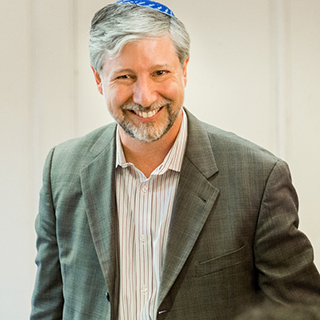Lifting Up Our Communities

Naso
By :
Daniel Nevins Former Pearl Resnick Dean of The Rabbinical School and the Division of Religious Leadership
Posted On Jun 2, 2012 / 5772 | Torah Commentary




“What task makes you nervous?” You may be surprised by my answer—making synagogue announcements. During my years as a congregational rabbi, I enjoyed public speaking, whether to a small minyan or to a full sanctuary. But standing up at the end of tefillah and making announcements was always a challenge. I wanted to give warm but equal acknowledgement to all who had contributed to the service, as well as to those who had played the many roles necessary to help the shul function. Both volunteers and staff deserved recognition. There were milestones to celebrate, mourners to comfort, and programs to promote.
How much information was it appropriate to share? What needed to be said in person, and what could be reserved for other forums? How to avoid snubbing one person when praising another? How to balance the need to inform with the pressure to move quickly to kiddush? How to correct the inevitable errors with grace? I worried about these things, and still do when I seek to create community in our schools by “lifting up” the contributions of individuals. These considerations may not strike you as momentous, but for me they represent core communal values—celebrating volunteerism, sensitivity to individuals, and awareness of the carrying capacity of the whole congregation.
“Carrying capacity” might be a good explanation for our parashah’s title, Naso, which literally means, “lift up.” In these chapters God gives Moses precise orders for the leaders of the people—both the clergy and the tribal chiefs. It ends with a somewhat stultifying litany of the identical offerings of the chieftains. This portion lacks exciting narratives, and yet there is a sense of vast power embedded in its orderly universe. The Levites are instructed to do their shipping tasks precisely lest they die. They are also given precise instructions on how to bless the Israelites in what has become one of the most familiar of biblical texts, the priestly benediction. Even the two non sequiturs of our portion, the regulations of the sotah (suspected adulteress) and the nazir (pious ascetic), are focused on controlling with ritual what are normally unregulated emotional events.
The overall message of our portion seems to be that for Israel to function as a holy camp, every person must have a designated role, and that each role must be acknowledged with explicit reference to the task performed and the name of the person who completed it. In truth, the Torah portion focuses only on certain classes of people—men alone are mentioned, and among men, clergy and chieftains are named. Today we try to diversify, making sure that men and women of different generations and profiles are invited to take leadership roles. Recruiting such people, identifying important and appropriate tasks for them, training them and then recognizing their efforts is perhaps the most challenging and rewarding obligation of a communal leader. My friend Rabbi Hayim Herring, in his new book, Tomorrow’s Synagogue Today, teaches of the importance of expanding the circle of leadership so that more people are tapped for their ideas and energy, and the congregation truly becomes a participatory community.
The early Hasidic writer Rabbi Elimelekh Lipman (b. 1717 in Poland; known for his book of sermons, Noam Elimelekh) focused his teachings on the role of a tzadik, or righteous leader. Looking at our portion, he discerned that Moses and Aaron were intent on “lifting up the head” of each person. Somehow as saints they were able to discern the spiritual history (gilgul—playing on the synonym for head, gulgolet) of each member of their community, and knew how to elevate each individual until the house of Israel could become a united front for bringing the divine presence into the world.
Parsahat Naso is the longest portion in the Torah, and it generally comes just after Shavu’ot, when we are flushed with excitement at having received the Torah. What are we to do with this precious and somewhat overwhelming gift? We must use the Torah to lift up the heads of each person in our community, to give them all sacred tasks, to acknowledge them and to unite them into a kehillah kedoshah, a holy community. Announcing the efforts of our community, thanking those who contributed, and recruiting others to join—these are not minor tasks. These are the very essence of leadership, and they are the shared responsibility of the entire community. Whether you are a volunteer or a paid professional, it is your obligation to engage more Jews in the sacred work of your community. You will not be asking them for a favor; you will be lifting them up and giving them the gift of an honored role in the continuing covenant between God and Israel.
The publication and distribution of the JTS Torah Commentary are made possible by a generous grant from Rita Dee and Harold (z”l) Hassenfeld.